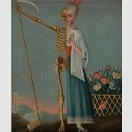
“A thought-provoking matchup of Buddhist and Christian treatments of death.”
“...a remarkably expansive exhibition in which even the smallest moments reverberate with wit, gravity, and purpose.”
Death Is Not the End is a cross-cultural exhibition that explores notions of death and afterlife through the art of Tibetan Buddhism and Christianity. During a time of great global turmoil, loss, and uncertainty, the exhibition invites contemplation of the universal human condition of impermanence and the desire to continue to exist.
The exhibition features prints, oil paintings, bone ornaments, thangka paintings, sculptures, illuminated manuscripts, and ritual items, and brings together 58 objects spanning 12 centuries from the Rubin Museum’s collection alongside artworks on loan from private collections and major institutions, including the Metropolitan Museum of Art, Morgan Library and Museum, Museum aan de Stroom in Antwerp, Wellcome Collection in London, Nelson Atkins Museum in Kansas City, San Antonio Museum of Art, and more.
The exhibition is organized around three major themes: the Human Condition, or the shared understanding of our mortality in this world; States In-Between, or the concepts of limbo, purgatory, and bardo; and (After)life, focusing on resurrection, ideas of transformation, and heaven.
Curated by Elena Pakhoutova
Death Is Not the End is supported by the E. Rhodes and Leona B. Carpenter Foundation, Ellen Bayard Weedon Foundation, Robert Lehman Foundation, and The Prospect Hill Foundation.
The Rubin Museum’s programs are made possible by the New York State Council on the Arts with the support of the Office of Governor Kathy Hochcul and the New York State Legislature.
This project is supported in part by the National Endowment for the Arts.
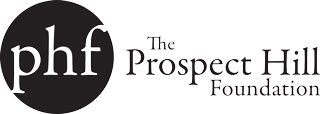


Image credits:
Lords of the Charnel Ground, Smashana Adipati; Tibet; 18th century; painted terracotta; Rubin Museum of Art; C2002.36.1 (HAR 65149); photograph by David De Armas, Rubin Museum of Art, 2012
Wheel of Life; Tibet or Mongolia; 19th century; pigments on cloth; Rubin Museum of Art; gift of Shelley and Donald Rubin; C2006.66.131 (HAR 78)
A Woman Divided into Two, Representing Life and Death; 1790–1820; oil painting; 16 5/16 × 14 in. (41.5 x 35.5 cm); Wellcome Collection, London; 45063i
Pieter van der Heyden (Netherlandish, ca. 1525–1569); The Descent of Christ Into Limbo; Antwerp; ca. 1561; engraving; first state of two; sheet: 9 1/16 x 11 7/16 in. (23 x 29 cm); lent by the Metropolitan Museum of Art, Harris Brisbane Dick Fund, 1926 (26.72.41)
Sarvavid Album Leaf #53: Liberation from Hell; Inner Mongolia; 18th–19th century; pigments on paper; Collection of the City of Antwerp – MAS; AE.1977.0026.41-54; Photo: Bart Huysmans & Michel Wuyts
Memento Mori Prayer Bead; Germany or the Netherlands, 1500-1550; Ivory; 2 3/4 × 1 1/2 × 1 5/8 in. (7 × 3.8 × 4.1 cm); Bowdoin College Museum of Art, Brunswick, Maine, Gift of Linda and David Roth in memory of David P. Becker, 2011.26
Sarvavid Album Leaf #24: Rainbow Light; Inner Mongolia; 18th–19th century; pigments on paper; Collection of the City of Antwerp – MAS; AE.1977.0026.36-54; Photo: Bart Huysmans & Michel Wuyts
Leg Bone Trumpet (kangling); Tibet; 18th-19th century; human bone, copper, coral, leather; Rubin Museum of Art, gift of Robert and Lois Bayils; SC2019.3.2
Plan your visit
Send Your Comments
Comments are moderated, and will not appear on this site until the Rubin has approved them.


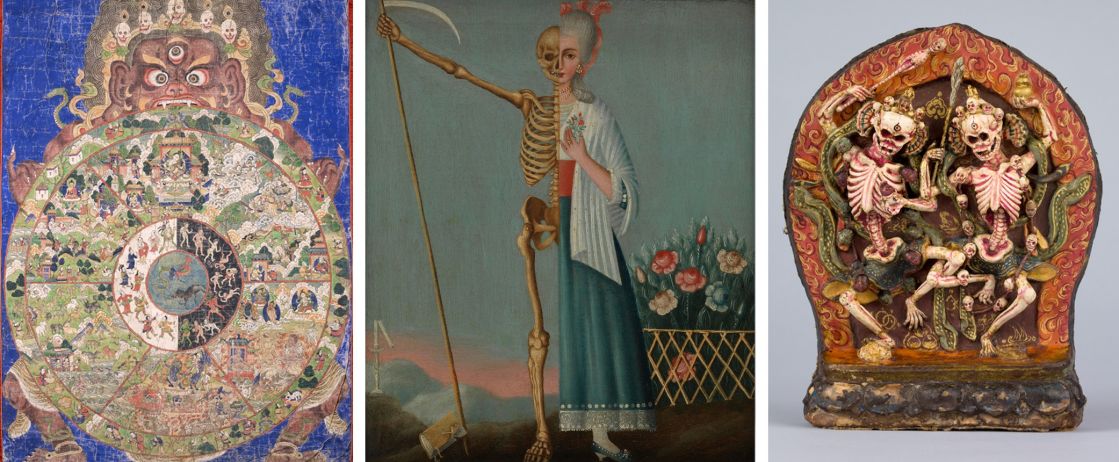
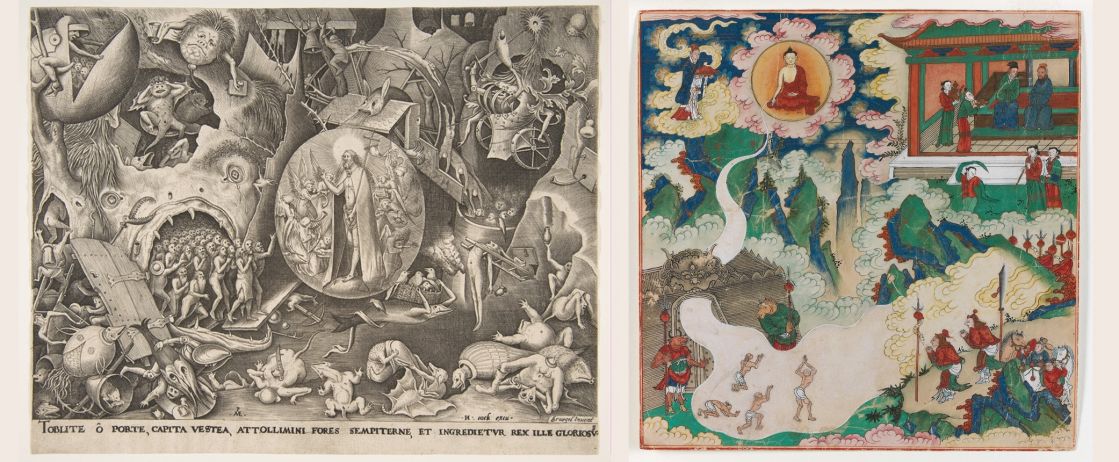
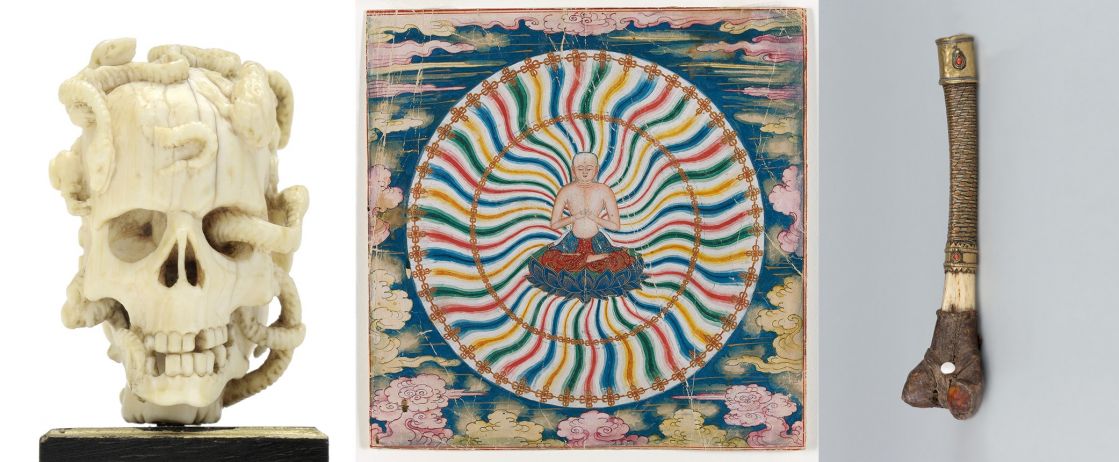

__small.jpg)
